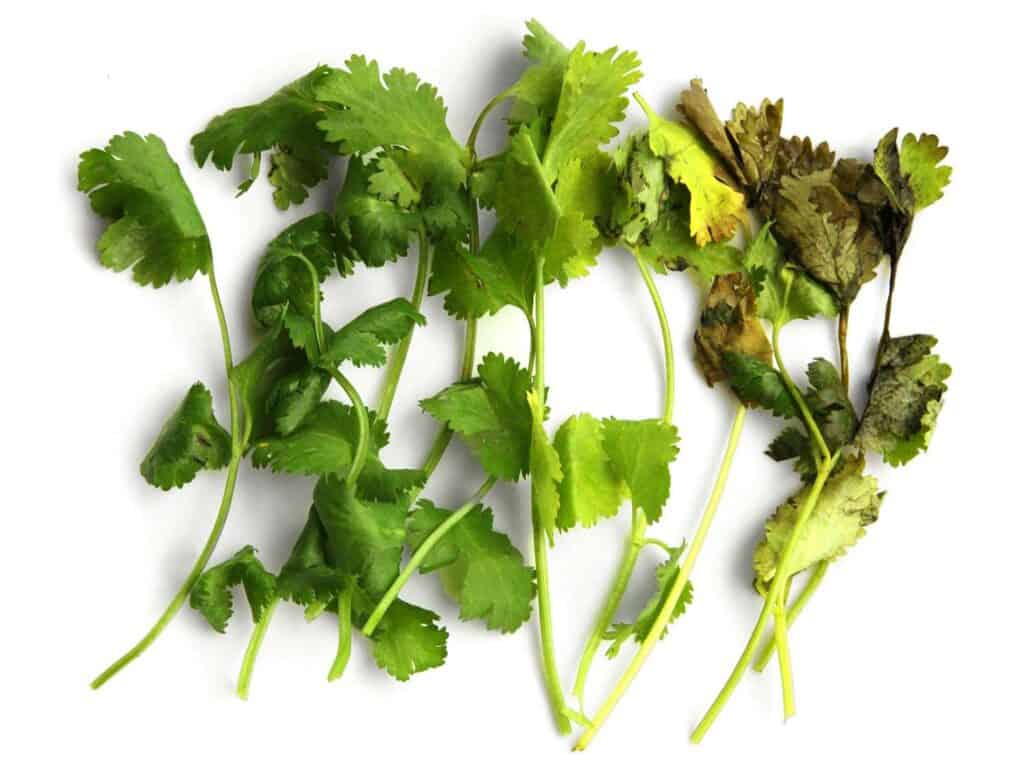SUMMARY: Dry herbs have a longer shelf life than fresh but lose potency over time; proper storage, including refrigeration and drying, can significantly extend their useful life and maintain flavor profiles. Knowing when to toss them is key to their optimal culinary use.
Have you ever reached for your favorite herbs, only to find they’ve lost their flavor and potency?

Finding the balance between freshness and longevity can transform your culinary creations.
- Understanding Herb Longevity
- Shelf Life of Dry Herbs
- Maximizing the Potency of Fresh Herbs
- Transitioning from Fresh to Dry
Continue reading to discover how you can preserve your herbs effectively and make informed decisions that enhance your cooking.
Understanding Herb Longevity
Harnessing the full potential of herbs starts with a basic understanding of what affects their longevity. Both fresh and dried herbs are pivotal in culinary arts, yet each has its own set of guidelines for optimal use. Generally, the lifespan of herbs significantly depends on how they are processed and stored. While dried herbs are praised for their extended shelf life, they do require proper handling to maintain their essence. Conversely, fresh herbs boast a vibrant flavor that, unfortunately, fades much quicker. Knowing the difference in shelf life and the right conditions for storage can dramatically enhance your culinary experiences, ensuring that every dish benefits from the maximum flavor and aroma that herbs can offer.
Shelf Life of Dry Herbs
Understanding the shelf life of dry herbs is crucial for maintaining their quality and efficacy in culinary applications. Properly dried herbs can last much longer than their fresh counterparts, typically ranging from one to three years. However, this longevity is heavily influenced by the conditions in which they are stored. To preserve their potency and aroma, dry herbs require an environment that is cool, dark, and dry. Exposure to heat, light, and moisture is the primary culprit in reducing the shelf life and effectiveness of dried herbs.
To optimize storage, it is recommended to keep dry herbs in an airtight container, away from direct sunlight and heat sources like stoves or heaters. Glass jars with tight-fitting lids, tucked away in a cupboard or pantry, offer an ideal environment. Furthermore, keeping them whole until usage can also extend their shelf life, as whole herbs retain their flavors longer than ground spices.
Identifying when dry herbs have lost their vitality is key to ensuring their best use. A general rule of thumb is to visually inspect the herbs for any discoloration or dullness and to trust your senses. Herbs that lack their characteristic aroma or taste bland are likely beyond their prime. Additionally, crushing a small amount between your fingers should release their distinct scent; a lack of fragrance indicates that it’s time to replace them.
Maximizing the Potency of Fresh Herbs
Preserving the vigor and vitality of fresh herbs is key to extending their usability and ensuring your dishes maintain that desired burst of flavor. Fresh herbs, unlike their dried counterparts, require specific storage methods to sustain their freshness and prevent wilting or spoilage. Following are effective strategies to maximize the shelf life of your fresh herbs:
Refrigeration: Most fresh herbs will benefit significantly from being stored in the refrigerator. A common method involves loosely wrapping the herbs in a damp paper towel and placing them inside an airtight container or zipping plastic bag. This technique keeps the herbs hydrated yet not so moist that they become susceptible to mold growth. Herbs like cilantro and parsley have shown to last much longer when their stems are trimmed and placed in a jar or glass filled with a few inches of water, similar to a bouquet of flowers, covered loosely with a plastic bag, and kept in the refrigerator.
Freezing: Freezing is another viable option for extending the life of your fresh herbs. There are two main approaches to freezing herbs: freezing whole leaves or chopping the herbs and freezing them in oil. To freeze whole leaves, wash and thoroughly dry the herbs before laying them flat on a baking sheet to freeze. Once frozen, transfer the leaves to an airtight container or freezer bag. When freezing herbs in oil, pack chopped herbs into ice cube trays, cover with oil (olive oil works well), and freeze. Once solid, transfer the cubes to a freezer bag for long-term storage. This method is particularly suitable for herbs like basil, tarragon, and oregano, and the oil-infused cubes can be directly used in cooking, offering a convenient flavor boost.
Employing these storage methods can significantly enhance the longevity and potency of your fresh herbs, ensuring they remain a vibrant addition to your culinary creations. Understanding the proper techniques for herb preservation empowers you to maintain a ready supply of fresh greens, ready to elevate your dishes with their dynamic flavors.
Transitioning from Fresh to Dry
Drying is a traditional and effective method for preserving herbs, allowing you to extend the life of your harvests well into the off-season. This process not only ensures that you have a constant supply of herbs but also concentrates their flavors, making them ideal for culinary uses where a more potent aroma and taste are desired. Here’s how you can successfully transition your fresh herbs to dried ones:
Air Drying: Perhaps the simplest method, air drying involves hanging bunches of herbs to dry naturally in a warm, dry, well-ventilated area away from direct sunlight. This method works best for herbs with low moisture content, such as rosemary, thyme, and oregano. It’s essential to gather them in small bunches and hang them upside down, securing them with string or rubber bands. Depending on the humidity levels, this process can take anywhere from a week to several weeks.
Dehydrating: Using a dehydrator is an efficient way to dry herbs, especially for those with higher moisture content like basil or mint. Spread the leaves in a single layer on the dehydrator trays and set the machine to the lowest setting, typically around 95-105°F (35-40°C). The drying process can take 1-4 hours, but it’s important to check periodically to ensure the herbs don’t over-dry and lose their essential oils.
Oven Drying: If you don’t have a dehydrator, an oven can be used as an alternative. Place the herbs on a baking sheet lined with parchment paper and set the oven to the lowest possible temperature, leaving the door ajar to allow moisture to escape. The herbs typically take 2-4 hours to dry thoroughly, but careful monitoring is necessary to prevent scorching.
Once your herbs are dried, crumble the leaves and store them in airtight containers, preferably in a cool, dark place to maintain their potency. This method of preservation not only enhances the shelf life of your herbs but can also enrich the flavors of your dishes throughout the year.
Extending Herb Freshness: Tips to Maximize Flavor and Shelf Life
In this article, we’ve explored the vital techniques and knowledge necessary to extend the longevity of herbs, ensuring their lasting freshness and potency for culinary use.
- Understanding herb longevity is crucial for maximizing their culinary potential.
- Dry herbs generally have a longer shelf life than fresh herbs but require proper storage to maintain their potency.
- Maintaining the potency of fresh herbs involves methods of refrigeration, freezing, or drying them for extended use.
- Transitioning herbs from fresh to dry can significantly extend their usability while altering their flavor profile slightly.
- Implementing strategies for preserving herbs can enhance your cooking by retaining their desired flavors and aromas longer.
Herb Longevity FAQs
What is the average shelf life of dry herbs?
The average shelf life of dry herbs can range from one to three years, depending on how they are stored. The key to maximizing their longevity is keeping them in a cool, dark place, away from direct sunlight or moisture. However, even when stored properly, their potency will gradually decrease over time, so it’s important to check their aroma and flavor periodically.
How can I tell if my herbs are still potent?
You can tell if your herbs are still potent by assessing their color, aroma, and flavor. Fresh herbs should look vibrant and smell strong. When herbs begin to lose their potency, their color fades, their aroma diminishes, and their flavor becomes less pronounced. For dry herbs, a lack of aroma when crushed between your fingers is a good indicator that they have lost their potency.
Are there any disadvantages to drying fresh herbs?
While drying fresh herbs is an effective way to preserve them, the process can lead to changes in flavor and nutritional content. Some volatile oils, responsible for the herbs’ aroma and flavor, may be lost during drying, resulting in a slight alteration in taste. Additionally, the nutritional value of herbs may decrease through drying, though they still remain a good source of various nutrients.
